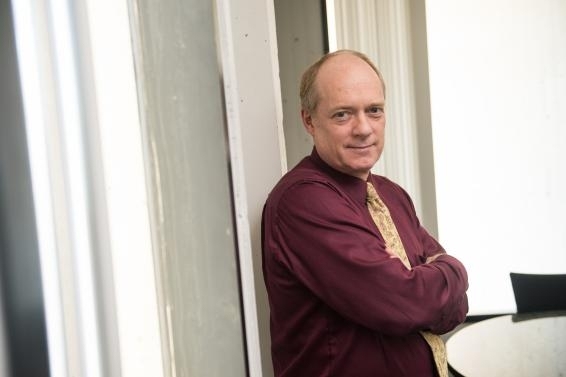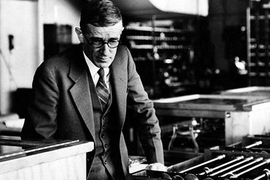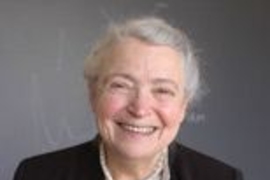Timothy Manning Swager, the John D. MacArthur Professor of Chemistry, has been named a 2018 Vannevar Bush Faculty Fellow by the U.S. Department of Defense (DoD).
The Vannevar Bush Faculty Fellowship program is sponsored by the Basic Research Office in the Office of the Under Secretary of Defense for Research and Engineering. It is administered by the Office of Naval Research. The program seeks outstanding researchers to conduct transformative basic research in topic areas of interest to the DoD. Through the program, select university researchers and students learn about DoD’s current and future challenges, and are introduced to some of the ongoing critical research. The program fosters long-term relationships between DoD and university researchers, and prepares them for possible entry into the defense and national security workforce.
"Although translating science to near-term applications is very important, perusing longer range blue sky concepts is something that I enjoy and funding for these types of activities has always been limited," said Swager, who was awarded the fellowship for his project, Complex Smart Colloids. "This fellowship is really a game changer for me, and will help us to push some high-risk, untested designs that could potentially have a powerful, lasting impact."
The fellowship commemorates Vannevar Bush, director of the Office of Scientific Research and Development during WWII and a former vice president of MIT. Following his example, the DoD invests in basic research to probe the limits of today's technologies and discover new phenomena and know-how that ultimately leads to future technologies and helps prevent capability surprise. These investments have led to broad and game-changing capabilities such as the global positioning satellite (GPS) system, magnetic random access memory, and stealth technology, to name a few.
Fellows are currently conducting basic research in the areas of quantum information science, neuroscience, nanoscience, novel engineered materials, applied mathematics, and statistics that could revolutionize a wide variety of DoD capabilities such as artificial intelligence, position-navigation-timing in denied environments, autonomous system design, decision support tools, and sensor development. In addition to conducting this innovative, blue sky research, the fellows have opportunities to directly engage with the larger DoD research enterprise and to share their knowledge and insights with DoD military and civilian leaders, researchers in DoD laboratories, and the national security science and engineering community.
The Swager Group's research is broadly focused on synthetic, supramolecular, analytical, and materials chemistry. They are interested in a spectrum of topics with an emphasis on the synthesis and construction of functional assemblies. Molecular recognition pervades a great deal of the group's research. Chemosensors require recognition elements to discriminate chemical signals.
Electronic polymers are one of the areas that the group is well known for having made many innovations and the researchers are constantly developing new electronic structures, properties, and uses for these materials. Recently they have launched an effort to create functionalized carbon nanotubes and graphenes, and have advanced new chemical methods for their functionalization and utilization in electrocatalysis and chemical and radiation sensing. In the area of liquid crystals, the group makes use of molecular complimentarity and receptor-ligand interactions to provide novel organizations.










